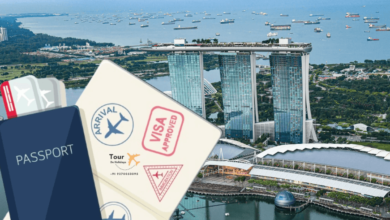Balancing Relaxation and Adventure on Vacation

Crafting a vacation that successfully blends relaxation with adventure requires thoughtful planning and a clear understanding of travelers’ expectations. Striking the right balance between unwinding and exploration can elevate the vacation experience, ensuring guests return refreshed and enriched. For travel professionals, helping clients achieve this harmony is an essential part of delivering exceptional service.
Understanding Traveler Preferences and Setting Expectations
The foundation of any well-balanced vacation begins with a clear understanding of the traveler’s preferences and expectations. While some guests prioritize rest and rejuvenation, others seek thrill and discovery. However, many travelers desire a mix of both—time to unwind and recharge, complemented by opportunities to engage in new experiences.
Before finalizing travel plans, it is essential to have candid conversations with clients about their ideal vacation rhythm. Questions about activity levels, desired pace, and interests help to tailor the itinerary. Setting expectations early reduces the risk of dissatisfaction and ensures the trip feels both restorative and exciting. This approach applies across various types of vacations, whether beach resorts, city breaks, or cruises.
Structuring Itineraries to Alternate Rest and Activity
One practical way to combine relaxation and adventure is through deliberate itinerary structuring. Alternating days or parts of days between active pursuits and restful downtime can create a natural rhythm that keeps travelers energized without overwhelming them.
For instance, a morning filled with hiking, snorkeling, or cultural tours might be followed by an afternoon of leisure at the beach, spa, or poolside. Similarly, travel days or less intense sightseeing excursions can serve as built-in recovery periods. This pacing allows guests to immerse themselves in new environments while still having space to relax and reflect.
When designing such itineraries, consider factors such as travel fatigue, time zones, and weather conditions, which can affect energy levels. Offering flexibility within the schedule, such as optional activities, empowers travelers to adjust based on how they feel during the trip.
Choosing Destinations That Naturally Offer Both Experiences
Selecting destinations known for their ability to offer both relaxation and adventure enhances the likelihood of meeting diverse traveler desires. Certain locations provide natural settings, infrastructure, and cultural experiences conducive to this balance.
Alaska exemplifies this dual appeal. Its vast wilderness and dramatic landscapes invite thrilling adventures like glacier hiking, wildlife spotting, and kayaking, while the tranquil environment and luxurious accommodations allow for peaceful retreats. The best Alaska cruise itinerary often reflects this balance, with days dedicated to exploring rugged shorelines and others reserved for relaxing onboard amid scenic views.
Similarly, tropical island resorts can combine water sports and excursions with spa treatments and serene beaches. Mountain retreats may offer hiking trails alongside cozy lodges and wellness programs. Identifying such destinations allows planners to craft seamless, multi-dimensional vacation experiences.
See also: Maximizing Your Spending Power While Traveling
Incorporating Wellness and Mindfulness Elements
Integrating wellness and mindfulness practices into vacations can further enhance the balance between relaxation and adventure. Activities like yoga sessions, meditation, and spa treatments offer travelers moments of calm and rejuvenation, even on days filled with exploration.
Many resorts and cruise lines now feature wellness programs that align with active excursions. For example, a morning yoga class might prepare guests physically and mentally for a day of hiking or biking. Incorporating these elements supports holistic well-being, ensuring travelers return not only with exciting memories but also a refreshed mind and body.
Managing Group Dynamics and Personalization
When planning vacations for groups or couples with varying preferences, the challenge of balancing relaxation and adventure becomes more complex. Offering options and personalization is key. Some guests may prefer to spend a day resting while others seek more active experiences.
Creating itineraries that include parallel activities or optional excursions allows each traveler to engage at their own pace. Additionally, clear communication about the availability of downtime and adventurous opportunities enables guests to plan accordingly. This flexibility often leads to higher satisfaction and fewer conflicts within groups.
Conclusion
Successfully combining relaxation and adventure on vacation hinges on understanding traveler preferences, structuring thoughtful itineraries, and selecting destinations and accommodations that naturally support this balance. Offering wellness options, accommodating diverse group dynamics, and managing logistics carefully further enhance the experience. Destinations like Alaska demonstrate how varied environments and activities can harmonize to create memorable, fulfilling trips. By focusing on these strategies, travel professionals can help clients achieve vacations that refresh the body and invigorate the spirit, ultimately leading to greater satisfaction and lasting memories.





